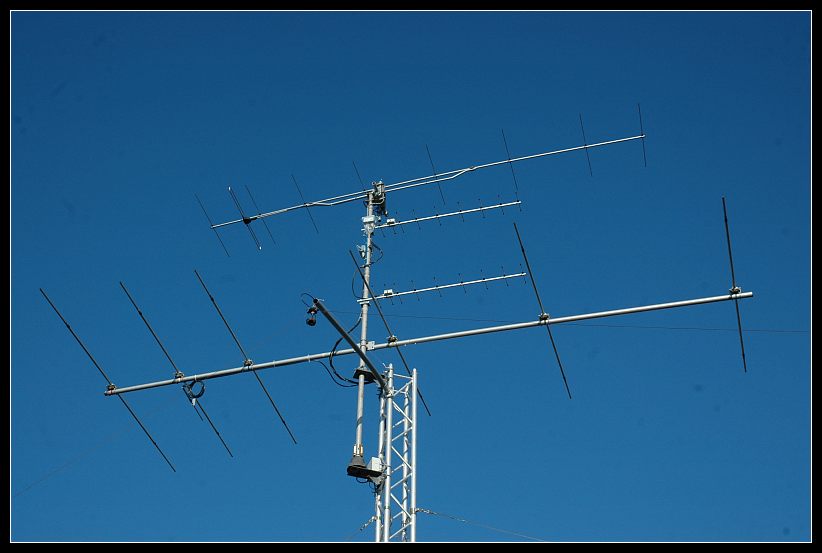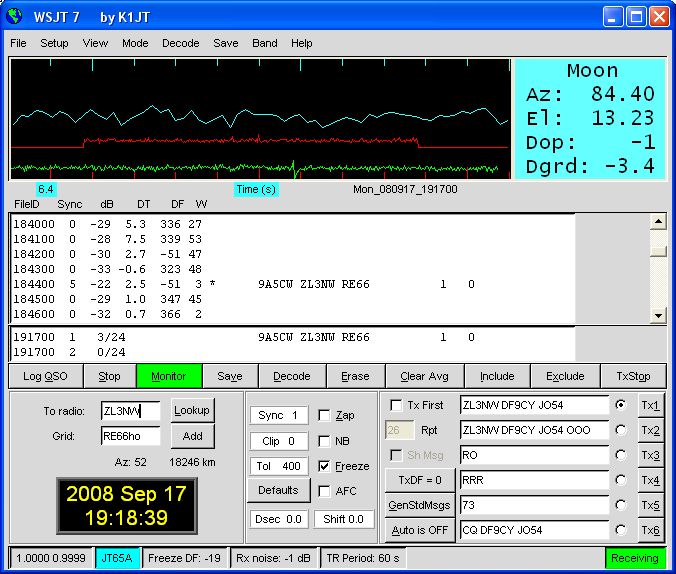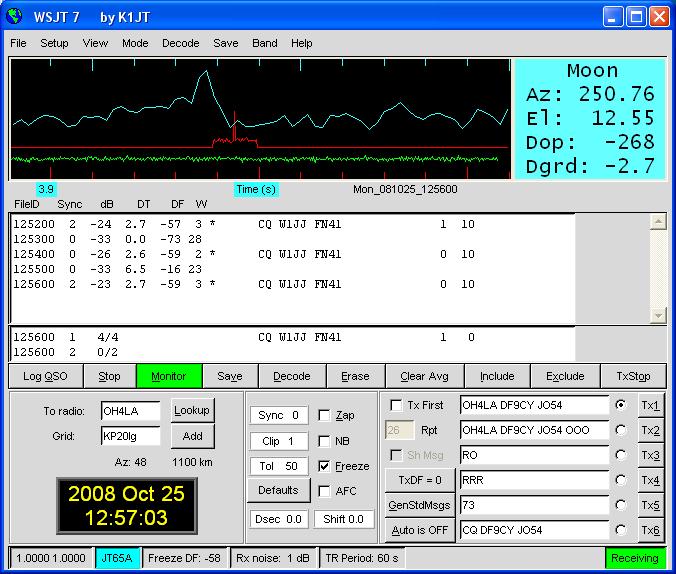© Christoph Petermann DF9CY 2008/2010
Last Revision: 29 March 2010
The Station
Receiver (Transceiver) : Kenwood TS690s
Coaxial Cable : 25m H2000 low loss ca 0.7 dB
Antenna : ZX 6 element yagi at 9.5m above ground level
Preamplifier : very close to the dipole (F=0.9 dB)
Digital-Analog Conversion: EMU 0202 precision low noise USB sound
card.
Computer: DELL Notebook Latitude D820 (Windows7) or PC with
WinXP-Prof
My intentional question was: Would it possible to receive Earth-Moon-Earth signals with this system ? Of course in Germany we are power restricted and transmitting with the necessary power is prohibited.

Antenna system at DF9CY in Summer 2008.
Four stations copied so far on 6m EME : G5WQ, W7GJ, W1JJ and ZL3NW. I tried more, but I was not successful up to now. Best was W7GJ with -17 dB on 20 March 2010 so far. (29 March 2010)
ODX ZL3NW
On the ON4KST 50 MHz chat I saw ZL3NW and 9A5CW arranging an EME sked on 50.204 MHz. Moon was only 2 degrees above horizon at that time. I placed my receiver (which has a known offset of 120 Hz on the 50 MHz band) in WSJT mode JT65A. The direction of moonrise was 70°, which is one of my favourites, where local noise is very low. So out of the window there I could see a wonderful moonrise. I could see a very weak trace of a JT65A signal exactly where it should be. But there was no decode. BTW I have the deep-search feature always switched off. I had to go out of the room for about ten minutes to care about the kids. When I returned, there was exactly one decode of ZL3NW calling 9A5CW. Great! The signal has been -22dB what is not bad at all. And single yagi antennas at both ends.

Screenshot of the WSJT program shortly after the time of receiving
ZL3NW.

Image of the ZL3NW antenna. A lovely antenna ...
W1JJ
W1JJ, Mick was first received in July 2008, where I got him in one period in JT65B with -22 dB. During the moonset on 25 October 2008 I got his signals over many periods and even in between some birdies from a computer monitor which was on for a while I got Micks signal. With the lowest vertical lobe of the antenna beeing at ca 10° elevation, I got him down to ca 4,5° elevation of the moon above the horizon. I could well see the faraday rotaion but overall the signal seemed to have less rapid fading then I experience on 2m. Mick was called by G5WQ, whom I received via tropo from the back (!) of his antenna. BUT a weak trace of his reflected signal could be positively identified as well.

Receiving W1JJ during moonset.
First success W7GJ
The first station I ever could receive was Lance, W7GJ, with his wonderful station on 6 June 2008. Best signal ever was -19 dB in JT65A mode. I even received him in CW in July 2008. Next station has been W1JJ with -22dB, even though there were some 'birdies' on that frequency.

This image shows the WSJT screen of a W7GJ CQ call.